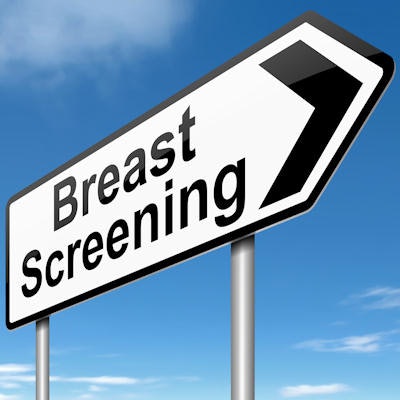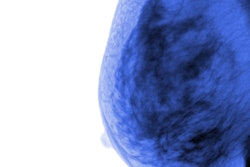
Breast cancer screening with synthesized 2D digital breast tomosynthesis (DBT) is ready for routine clinical use, according to a study published online August 5 in Breast Cancer Research and Treatment that compared the technique with screening using full-field digital mammography (FFDM) and FFDM plus DBT.
An added benefit? Women are exposed to less radiation when synthesized 2D images are used with DBT, wrote the group led by Dr. Phoebe Freer from the University of Utah's Huntsman Cancer Institute in Salt Lake City.
 Dr. Phoebe Freer from the University of Utah.
Dr. Phoebe Freer from the University of Utah."Acquiring both DBT and a separate 2D FFDM exam nearly doubles the radiation dose to the patient over FFDM alone," the authors wrote. "While this 'double-dose' exposure for FFDM plus DBT falls below the United States Food and Drug Administration thresholds for screening mammography, minimizing the radiation dose is of paramount importance if DBT is to become the new standard of care for mammographic screening within the general population."
The study findings suggest that radiology practices can move forward with synthesized 2D mammography from the start as they implement DBT, Freer told AuntMinnie.com.
"Our study shows that synthesized mammography images are a fully feasible and adequate option for DBT," she said. "For practices that haven't yet implemented tomosynthesis, it's fine to go straight to synthesized 2D images, rather than having an interim phase of using digital mammography with DBT."
Separate -- but equal?
Most previous studies evaluating DBT have included separate 2D digital mammograms in DBT screening protocols, which increases the amount of radiation to which women are exposed. Prior studies have shown that the combination of synthesized 2D images and DBT decreases radiation dose by 45% compared with the combination of FFDM and DBT, on average -- making the dose about 8% more than FFDM alone, according to Freer and colleagues (Breast Cancer Res Treat, August 5, 2017).
But how do these images measure up when it comes to performance?
To address this question, the researchers used data from 31,979 women who underwent screening mammography between October 2013 and December 2015. The women were divided into three cohorts: synthesized 2D plus DBT (9,525 women), FFDM plus DBT (1,019 women), and FFDM alone (21,435 women).
Freer's team then analyzed the results for recall rates, cancer detection rates, the percentage of minimal cancers (i.e., invasive cancers 10 mm or smaller), and the number of cancers found in all exams recalled at screening (PPV1). The team adjusted study data to control for factors such as patient age, breast density, the presence of prior mammograms, and individual radiologists' interpretation performance.
Synthesized 2D DBT had the lowest recall rate of the three techniques and the highest PPV1, a difference that was statistically significant. There were no statistically significant differences in the overall cancer detection rate, number of invasive and/or in situ cancers identified, or percentage of minimal cancers among the three cohorts.
| Comparison of FFDM alone, FFDM plus DBT, and synthesized 2D plus DBT | |||
| FFDM | FFDM + DBT | Synthesized 2D + DBT | |
| Recall rate | 7.8% | 6.4% | 5.5% |
| Cancer detection rate (per 1,000 exams) | 5 | 5.7 | 5.4 |
| Invasive cancer detection rate (per 1,000 exams) | 3.9 | 3.4 | 4.3 |
| In situ cancer detection rate (per 1,000 exams) | 1.2 | 1.8 | 1.2 |
| Minimal cancers found (≤ 10 mm) | 57.6% | 50.9% | 60.6% |
| PPV1 | 6.2% | 8.1% | 9.1% |
Synthesized 2D plus DBT "maintains the statistically significant decrease in recall rate for FFDM plus DBT compared to FFDM," they wrote. "Further, we demonstrate that we decrease the false positives, while maintaining the cancer detection rate of FFDM."
Go for it
The findings support the use of synthesized 2D images with DBT as a replacement for FFDM plus DBT in clinical practice -- and certainly for FFDM alone, Freer and colleagues concluded.
"Being able to maintain our audit parameters of cancer detection, including minimal cancer percentage, invasive [cancer detection rate], in situ [cancer detection rate], and node-negative cancers, while improving our false-positive rate at nearly the same radiation dose as FFDM alone demonstrates that the technology is able to be implemented in widespread clinical use," they wrote.




















